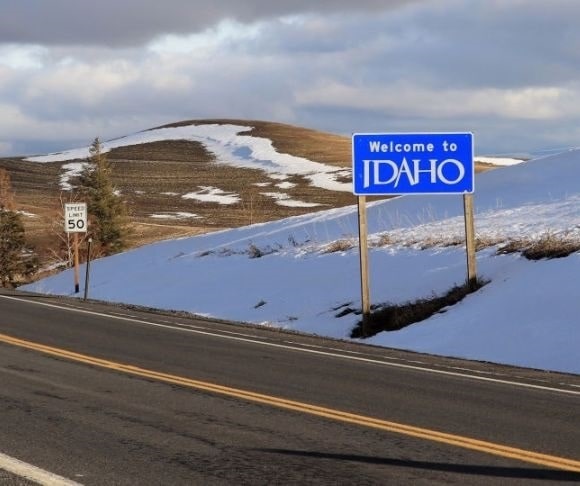What do you do when your state is controlled by Democrats whose laws are way too liberal for your taste? And moving out of state is not an option or a preference? Well, if you’re an Oregonian, the solution may be to remap state boundaries and join up with a neighbor who’s a bit more conservative. At least, that’s the plan underway for the group Move Oregon’s Border for a Greater Idaho.
Already, the movement has achieved initial approval from two counties. The plan is to get enough signatures to put the proposal on the November ballot. Mike McCarter, one of the main petitioners, said some Oregon residents are getting fed up with their state’s too-liberal lawmakers and policies. Democrats control both branches of the state legislature and the governor’s office, making it difficult for rural conservatives to have a say in the political arena. McCarter said in a press release:
“Rural counties have become increasingly outraged by laws coming out of the Oregon Legislature that threaten our livelihoods, our industries, our wallet, our gun rights, and our values. We tried voting those legislators out, but rural Oregon is outnumbered and our voices are now ignored. This is our last resort.”
 As Liberty Nation reported last year, Oregon Governor Kate Brown sent state police after Republican state senators who fled (some to other states) rather than be forced to vote on a drastic climate change bill. State Senator Brian Boquist warned before the walkout he would not be pressured to remain: “Send bachelors and come heavily armed. I’m not going to be a political prisoner in the state of Oregon. It’s just that simple.” A recall for the governor didn’t get the 280,000 signatures required, so now desperate citizens are trying to realign the state’s boundaries.
As Liberty Nation reported last year, Oregon Governor Kate Brown sent state police after Republican state senators who fled (some to other states) rather than be forced to vote on a drastic climate change bill. State Senator Brian Boquist warned before the walkout he would not be pressured to remain: “Send bachelors and come heavily armed. I’m not going to be a political prisoner in the state of Oregon. It’s just that simple.” A recall for the governor didn’t get the 280,000 signatures required, so now desperate citizens are trying to realign the state’s boundaries.
The proposed realignment with Idaho is not a secession, such as California is attempting, according to the plan. “This proposal is different from secession because it is simply a shift in borders that does not affect the balance of power in the U.S. Senate. It does not create a new state or increase the number of states.”
The proposition would allow Oregon and California to redraw their borders “to put conservative counties on the other side of their borders to make Idaho bigger.” The detailed plan suggests the border move would only help the Democrats in the state.
“These legislatures can be expected to be in favor of strengthening the position of their party in their state by letting Trump-voting counties leave. They should be in favor of improving their state finances by allowing the departure of counties that don’t pay their share of income and sales taxes because of lower incomes … The territory that we propose removing from Oregon has only 21% of the population of Oregon.”
It is also estimated that California would lose only 0.9% of its population with the redrawing of the border. There are 36 counties in the state. If the proposal is successful, only 14 counties in the Willamette Valley would remain.
McCarter said they are starting with county ballot initiatives first to show that “ordinary voters” in rural Oregon don’t want to be ruled from Salem, the capital, any longer.
“Willamette Valley legislators would welcome the improvement in the state budget if we leave because our counties pay much less income taxes than their counties do, per person. And 2 out of 3 of our voters vote against their party. Our economies are rural, like Idaho’s economy, because we have fewer white-collar workers than the Willamette Valley does.”

(Photo by: Don and Melinda Crawford/UCG/Universal Images Group via Getty Images)
Valerie Gottschalk, another main petitioner, said, “People here would prefer Idaho’s conservative governance to the progressive/liberal current Oregon governance.”
This isn’t the first time Oregonians have tried to realign their boundaries. In 1941, the residents of southwestern Oregon tried to secede to create a state of Jefferson with northern Californians.
While there is quite a bit of support for the Oregon-Idaho movement, there is also a lot of pushback on the group’s Facebook page. One of the main questions asked is that if they don’t like Oregon, why not just move to Idaho? The common response was that residents had spent so many years building their homes and businesses, making friends, and improving their communities that they don’t want to rip up their roots and move elsewhere.
Even if the group is able to get the measure on the November ballot, approval to move the border will still needs to come from the Idaho and Oregon state legislatures as well as Congress.
~
Read more from Kelli Ballard.




